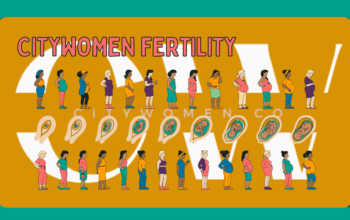
January 31, 2020 at 01:00PM by CWC
While there are many different personality typologies, each has a primary focus: Myers-Briggs examines how you take in information; enneagram zeros in on your core fears; Gretchen Rubin’s four tendencies reveals how you handle expectations. And another personality indicator, taken by more than a million people each year, distills how you operate with others—at work, in your personal relationships, and beyond. This indicator is for DISC personality types.
The DISC theory of personality is credited to psychologist William Moulton Marston, PhD, who also invented something (or rather, someone) else you may know: the comic book character, Wonder Woman. Based on Dr. Marston’s theory that understanding your own behavioral patterns and how you engage in the world can help you achieve your desired results, assessments were developed so all people could place themselves on the four-personality DISC continuum.
As you may have guessed from the four-letter acronym, there are four central DISC personality types. Some people identify strongly with their type, and others people have blended traits, where one trait is strongest, but another is moderately strong and still influential in their personality.
Ready to level up your problem-solving skills? Take a free test here to learn your type, and then read up on what each means below.
What the DISC personality types mean in practice
Dominance (D)
Dominance types are ambitious, tenacious, and driven. They get results, no matter what it takes, even if they seem to discount feelings in the process. D types are also competitive, direct, bold, and persuasive. They seem fearless in the face of adversity, and make intense-but-effective leaders.
Some D types also have a Conscientiousness influence (DC), which makes them detail-oriented, focused, and independent. Other Ds are affected by the Influence trait (DI), which makes them more sociable and high-achieving through an ability to win friends and get results. (Steadiness is considered the opposite of Dominance, so it doesn’t typically show up in one single personality.)
Influence (I)
Influence types are magnetic, enthusiastic, and socially savvy individuals. They know how to effectively win friends, and people tend to find them friendly and personable. They often lift the spirits of others and are tactful in knowing how to problem-solve and squash arguments.
Some I types are also affected by the Dominance trait (ID), which makes them more persuasive, passionate and open to taking risks. Other I types are impacted by the Steadiness trait (IS), which makes them more supportive, harmonious, and approachable. (Conscientiousness is considered the opposite of Influence, so it doesn’t typically show up in one single personality.)
Steadiness (S)
Steadiness types are supportive, caring, and compassionate. They look to give before they take for themselves, and they are always inclined to help solve a problem that affects the most people versus an issue that just affects them. They really value harmonious environments, tend to be very empathetic and understanding, and they are typically very tolerant of different beliefs and opinions.
Some people who lead with Steadiness are also influenced by Conscientiousness (SC), which makes them extremely reliable, calm under pressure and rational. Other S types are affected by the Influence trait (SI), which makes them the ultimate person to bring people together and collaborate over a mission to get things done. (Dominance is considered the opposite of Steadiness, so it doesn’t typically show up in one single personality.)
Conscientiousness (C)
Conscientious types are detail-oriented, fact-based, and precise. They speak clearly and fluently, and are generally very careful regarding what they say and do. They value accuracy, tend to follow instructions, and are very concerned with order and correctness. This type tends to be systematic, process-oriented, and rule-following.
Some Conscientious types are influenced by Dominance (CD), as well, making them more resolute, capable of quick-thinking and assertive. Other C types tend to be impacted by Steadiness (CS), which makes them more cooperative and flexible than their counterparts. (Influence is considered the opposite of Conscientiousness, so it doesn’t typically show up in one single personality.)
Why you should know your DISC type (and your partner’s, colleague’s, and boss’s)
Knowing which type you are, and also which subtype, can help you understand your strengths and your weaknesses in your relationships—specifically in how other people may be perceiving you. If you’re a D type and are interacting with an S type, for instance, you may have very different values and goals. You may be striving for results, whereas the S type with whom you’re communicating is more concerned with making sure everyone’s feelings are heard and supported.
A huge value of the DISC model is that it tends to capture a spectrum of behaviors and is a results-focused test. Meaning, there are actionable takeaways to bring to your life. After learning your type, consider how you are perceived by others so you can bridge the gap in understanding. This exercise can also help you better understand the values of everyone else, which will, ideally, contribute to better desired results at work, at home, among friends, and beyond.
Ready to switch away from DISC personality types to get more Myers-Briggs intel? Here’s the top relationship issue for you to overcome, and here’s how you like to relax, both according to your Myers-Briggs type.
ADVERTISEMENT
ADVERTISEMENTSports Direct Free Delivery on All Orders! |
Author Jenna Birch | Well and Good
Selected by CWC

ADVERTISEMENT
ADVERTISEMENTUp to 30% off Gift Sets |








